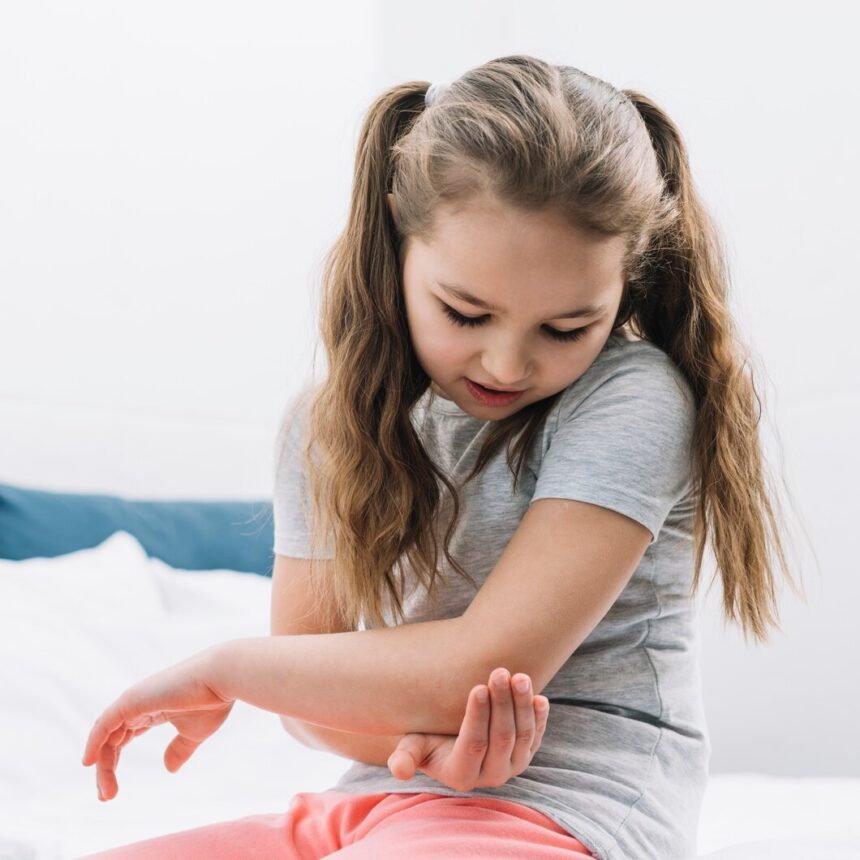Chickenpox, also known as varicella, is a highly contagious viral infection caused by the varicella-zoster virus (VZV). It primarily affects children, although it can occur in individuals of any age who have not been vaccinated or previously had the infection. Recognizing the early signs and symptoms of chickenpox is crucial for prompt diagnosis and appropriate management. In this article, we’ll explore the typical early signs and symptoms of chickenpox in children, along with important considerations for parents and caregivers.
1. Rash:
The hallmark symptom of chickenpox is the development of a characteristic rash. It usually begins as red spots or bumps that quickly progress to fluid-filled blisters. These blisters can appear anywhere on the body, including the face, scalp, trunk, arms, legs, and genital area.
2. Fever:
Many children with chickenpox develop a low-grade fever, typically ranging from 100.4°F to 102.2°F (38°C to 39°C). The fever may precede the onset of the rash or occur concurrently with it. Fever is the body’s natural response to infection and is often accompanied by other symptoms such as malaise and loss of appetite.
3. Fatigue and Malaise:
Children with chickenpox may experience fatigue, malaise, and overall feelings of illness. They may appear lethargic, irritable, or less active than usual. These symptoms are common during the early stages of chickenpox and may persist throughout the course of the infection.
4. Itching:
As the chickenpox rash progresses, the blisters become increasingly itchy and uncomfortable. Children may experience intense itching, which can lead to scratching and potentially secondary bacterial infections. It’s essential to discourage excessive scratching and provide measures to alleviate itching, such as cool baths, calamine lotion, or antihistamines.
5. Headache and Sore Throat:
Some children with chickenpox may develop additional symptoms such as headache and sore throat. These symptoms are typically mild but can contribute to overall discomfort and malaise. Ensuring adequate hydration and rest can help alleviate these symptoms and support the body’s immune response.
6. Loss of Appetite:
During the early stages of chickenpox, children may experience a loss of appetite. This can be due to factors such as fever, malaise, and discomfort from the rash. While appetite loss is usually temporary, it’s essential to encourage fluids and offer small, nutritious meals to support recovery.
7. Sensitivity to Light:
In some cases, children with chickenpox may experience sensitivity to light, a condition known as photophobia. Exposure to bright lights may exacerbate headache and eye discomfort. Dimming the lights or providing sunglasses can help alleviate symptoms of photophobia.
8. Respiratory Symptoms:
In addition to the classic symptoms of chickenpox, some children may experience mild respiratory symptoms, such as coughing or nasal congestion. These symptoms are less common but can occur, especially in children with underlying respiratory conditions.
Recognizing the early signs and symptoms of chickenpox in children is essential for prompt diagnosis and appropriate management. If you suspect that your child has chickenpox, it’s important to consult a healthcare provider for evaluation and guidance. While chickenpox is usually a mild and self-limiting illness, complications can occur, especially in children with weakened immune systems or underlying health conditions. Vaccination against chickenpox is highly effective in preventing the infection and its complications, so it’s essential to ensure that children receive the recommended vaccinations according to the schedule recommended by healthcare professionals. By staying informed and vigilant, parents and caregivers can help protect their children’s health and well-being.










